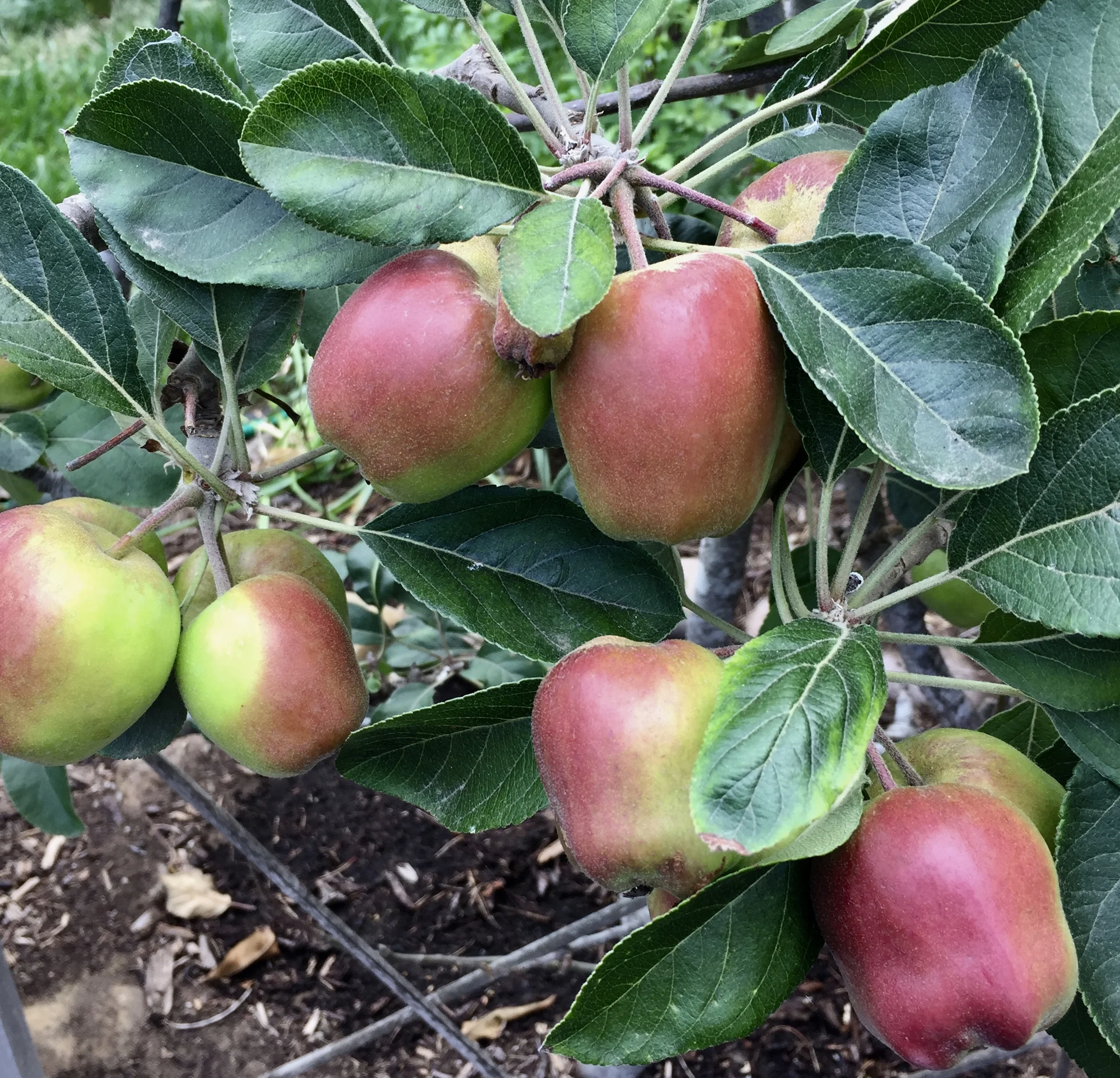June 26, 2014
“What I appreciate about espaliered fruit trees is that they are beautiful and useful.” P. Allen Smith
There are many reasons to espalier fruit trees but the above quote summarizes it nicely for me.
More reasons–
- Saves space in small and urban gardens.
- Easy to manage, train and harvest–especially for gardeners averse to ladders or with limited mobility.
- Provides a garden focal point and ornamental value in all seasons. Can become landscape sculpture.
- Heat from a wall on which fruit tree is trained can create a favorable micro-climate.
- More productive per foot than free-standing trees. Produces fruit earlier since energies focused on fruit spur production.
- Fruit may be larger and more flavorful since less of the tree’s energy goes for vegetative growth.
- Fruit receives more light which can enhance development of natural sugars and fruit color.
- Easier to protect the fruit tree from frost or birds.
- Air circulation is improved, which can lessen disease. Problems are more apparent.
- Can become living fences or divide garden areas.
- Walls and fences become productive growing area for edibles.
- Trees are long-lived because branches are less likely to break.
Read the Art of Espalier–Part 1
Next week–Part 3: How to Espalier Fruit Trees.
Photo credit: Pintrest

